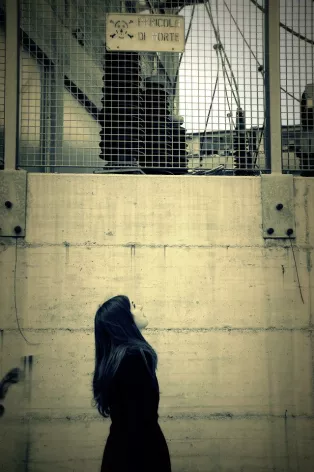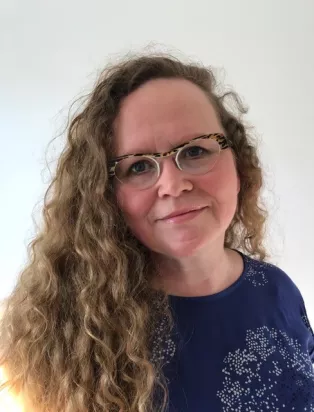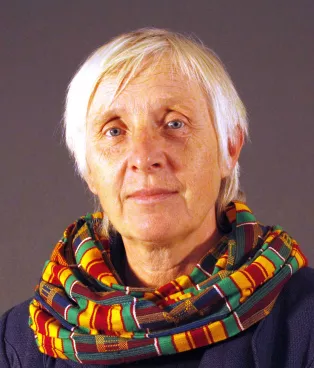(In)visibility of Sacred Waste: Asian Perspectives
Roundtable. Friday 11 March, 15:00-17:00 (CET)
Digital roundtable co-organised by Valentina Gamberi (Junior Fellow at the Research Centre for Material Culture at Leiden, the Netherlands) and Paulina Kolata (Postdoctoral Fellow at the Centre for East and Southeast Asian Studies at Lund, Sweden).
In the era of growing concerns over waste and pollution produced in our lives, several scholars of all things sacred began investigating the processes involved in the production, use, and discard of sacred materialities. The concept of sacred waste proposed by Irene Stengs (2014) has since been applied to and challenged through a variety of ethnographic contexts, including African, South American, and Oceanian cases. In this roundtable, we will explore the conceptual and practical realities of sacred waste in Asia.
Sacred residues are traces of the intersubjective interdependences between human worshippers and super-natural forces which, in turn, are embodied in anthropomorphic iconographies and forms. As such, sacred waste can reveal how individuals and communities live out and imagine their affections towards the supernatural as complex intersubjective relations. Consequently, the dilemma of discarding and “recycling” sacred traces is part and parcel of our moral economies where loss and decay of sacred power challenges our value systems and ideas of personhood, responsibility, and intersubjective reciprocity.
The participants in this roundtable will explore the (in)visibility of sacred waste across Asia and reflect on the extreme fluidity, volatalibility, and adaptability of sacred power. In staging of this conversation, we seek to connect and reach out to scholars interested in investigating the interconnections between the sacred, the material, and the wasteful.
The panellists, who have worked ethnographically with the concept of sacred waste, will reflect on:
- The aesthetics, affects, and emotion of sacred waste
- Dialectics between presence and absence
- Notions of personhood
- Socio-political and environmental implications of disposal
Bo Wang will draw on his research in Tibet to explore how sacred waste is connected to the notion of personhood, while unpacking the tensions between discard, disgust and preservation. Annaclaudia Martini will further reflect on the affective dimensions and processes of sorting through waste to explore its potential for healing in post-disaster communities in Japan. Trine Brox will then consider the question of “stewardship” and the affective bonds residing within the inherited materiality. Irene Stengs will respond to the panellists’ insights through her research in Thailand, inviting everyone to acknowledge the multilayered potential of sacred waste and the consequences of its force in Asian contexts. See below for the full abstracts.
Digital roundtable
Roundtable Panellists:
Bo Wang is Senior User Experience Researcher in the Product Experience, Design and Research Team at Best Buy, the top consumer electronics retailer in North America. He was a senior postdoc researcher at the University of Lausanne before taking an industry job, a career transition that is common among anthropologists—especially PhDs and postdocs in the precarious economy produced by late capitalism.
Annaclaudia Martini is Assistant Professor in Human Geography at the University of Bologna, Italy. She works at the intersection of geographies of affect, geographies of disaster, critical geography, tourism and heritage studies. She specializes in post-disaster Tohoku, Japan, looking at recovery in the communities of coastal Tohoku, issues of disaster justice, tourism as a form of affective meaning-making for the local communities, and qualitative and creative methods using affects and emotions. She also publishes as a journalist in Italian and international media.
Trine Brox is the Director of the Center for Contemporary Buddhist Studies and Associate Professor at the Department of Cross-Cultural and Regional Studies, University of Copenhagen, Denmark. Brox has written extensively about contemporaneous issues in Tibet and the Tibetan exile, as well as co-edited the books Buddhism and Waste: The Excess, Discard, and Afterlife of Buddhist Consumption(2022) and Buddhism and Business: Merit, Material Wealth and Morality in the Global Market Economy (2020) with Williams-Oerberg. Brox is the PI of the international collaborative project WASTE (2021-2025) that aims to understand the importance and role of religion in the generation and interpretation of waste.
Irene Stengs is Professor by special appointment ‘Anthropology of Ritual and Popular Culture’ at the Vrije Universiteit (Amsterdam) and Senior Researcher at the Meertens Institute (Amsterdam). Her research in the Netherlands and Thailand focuses on popular religiosity, material culture, commemorative ritual and processes of heritage formation. She is the author of Worshipping the Great Moderniser. King Chulalongkorn, Patron Saint of the Thai Middle Class (2009, NUS Press, Singapore), co-editor of The Secular Sacred. Emotions of Belonging and the Perils of Nation and Religion (2020, Palgrave, with Markus Balkenhol and Ernst van den Hemel) and co-editor of Managing Sacralities. Competing and Converging Claims of Religious Heritage (2022, Berghahn, with Ernst van den Hemel and Oscar Salemink).
Individual abstracts
Personhood is neither equivalent to personality to be measured and analyzed, nor a synonym for culture to be described or specified with adjectives or groups. Personhood is extended from the human world to the non-humans like animals and inanimate objects. What does claiming a personhood rooted in sacred waste require? This talk ponders on the ambiguous relationship among people, old clothes, sacred stones, and frightening bad earth spirits in a Tibetan village to propose a new way to think with sacred waste. It reveals the boundaries between cosmic pollution and environmental waste, between merit making and hazard avoidance, and between the religious self and the ecological self. On the one hand, the new thoughts on personhood and sacred waste would expand our understanding of ways to classify waste and non-waste; on the other, they will illuminate how actions on waste are as much about the ecological as they are about the sacred.
After the 2011 Great Eastern Japan Disaster of March 11, 2011, a tsunami of unprecedented height washed away over 20 million tons of debris and destroyed towns up to 6 km inland. Some objects -ships, cars, tōri (temple doors)- were displaced, and some were even retrieved in foreign countries. While the majority of debris has been considered waste, and disposed of as such, a small cluster has been brought back to Japan to be memorialized. But how is the choice made between debris that undergoes a process of sacralization, and thus memorialized, and debris that is discarded?
Drawing on geographical theories of space and affect, I will investigate how the affective space of post-disaster waste is located, and observe the narratives developed around the debris that support its "transfiguration" into sacred waste. I contend that the decision to maintain or discard an item is affective and relates to the potential of the object to become a locus for the healing of the individual and collective trauma caused by the 2011 disaster.
In my presentation, I discuss the burden of discarding significant but unwanted Buddhist things. Taking the example of how I inherited several plastic bags filled with Buddhist stuff after my friend passed away, I look at how they – as memories of a missed friend, heirlooms, and Buddhist sacra – activated what Hannah Gould (2019) calls a “sense of stewardship.” I investigate this sense of stewardship through the prism of Irene Stengs’ (2014) concept of ‘sacred waste’ with a particular focus on the attribution of affective qualities, moral connections, and religious significance to sacred waste.
Inspired by issues raised by the roundtable presenters, my discussion will focus on the obligations and restrictions that certain material or things impose on institutions or individuals involved with their preservation or disposal. We may ask: how to understand the processes that designate certain (selections of) matter into the category of waste and other into the categories to be preserved valuables (as heritage, relics, mementos etc.)? How to understand the tug-of-war between the waste and sacred values often attributed to the same material? Following David Chidester, I argue that such material is the focus of ‘extraordinary attention, intensive interpretation and regular ritualization’. Once charged with a special (not necessarily religious) meaning or value, sacralised material exerts a force of its own, steering its protection, countering its disposal. This may help to understand why engagements with sacralised material may unfold unruly, leading to unexpected (reputational, emotional, religious, financial) consequences for the people involved. Localizing these broader issues in ‘Asia’ we need to ask: in what practices and ways of engaging with things or matter is Asian/Buddhist sacred waste produced? In order to contribute to the latter, I will relate part of my discussion to my research on the sacredness of waste produced by King Bhumibol Adulyadej, Thailand’s former king.





